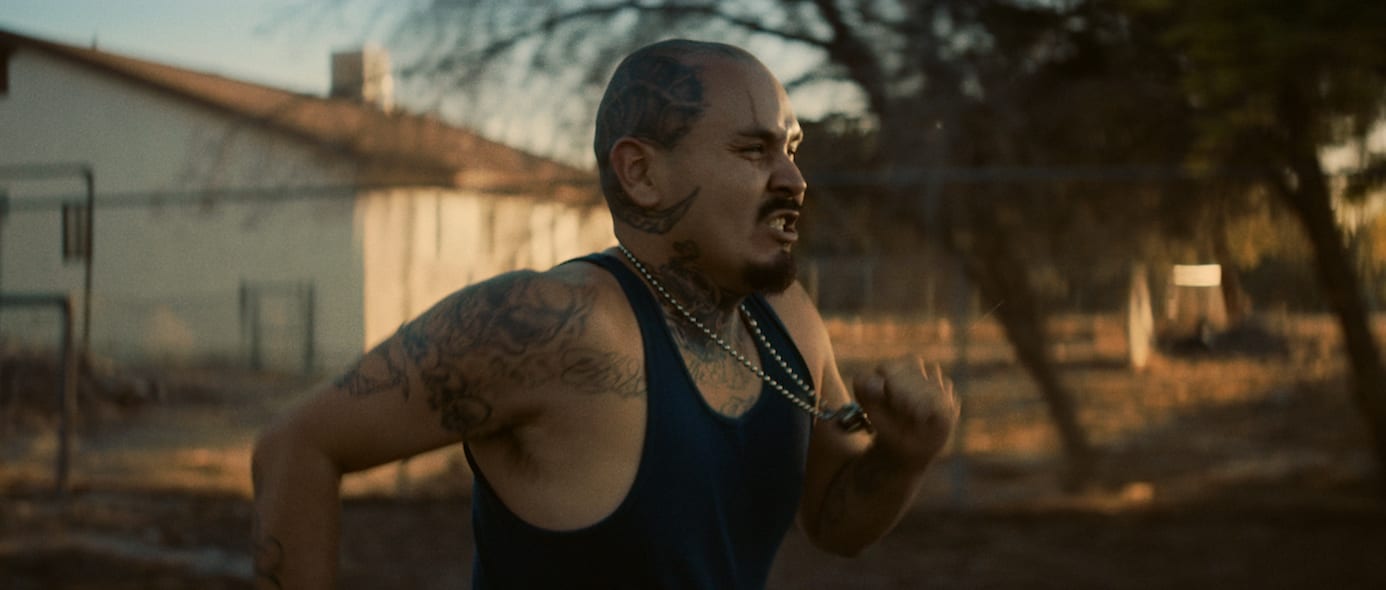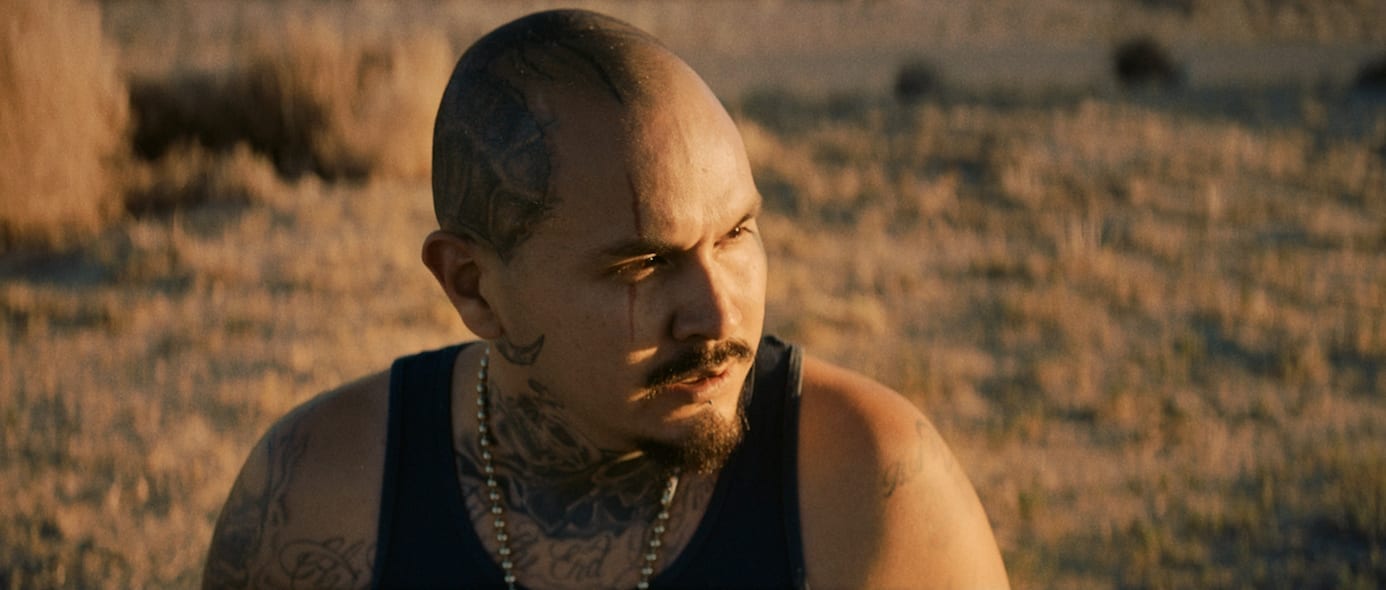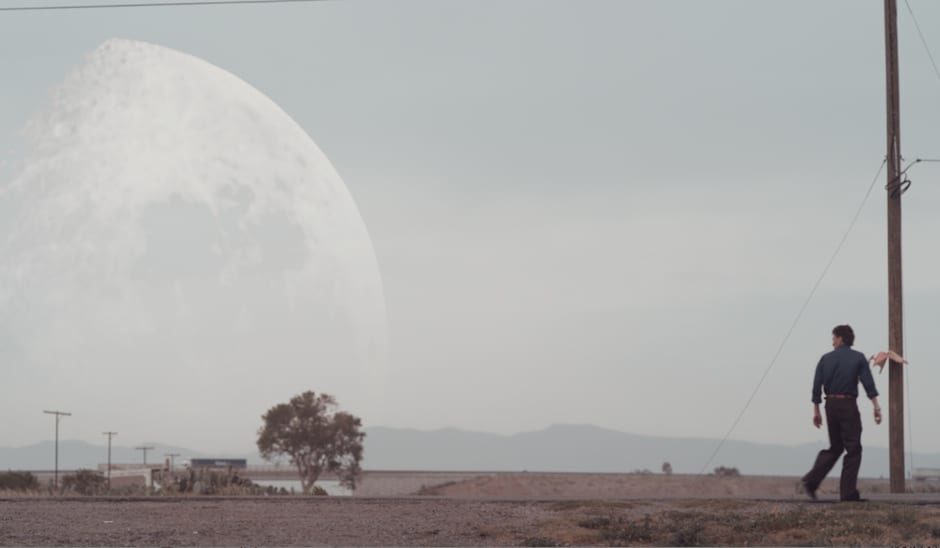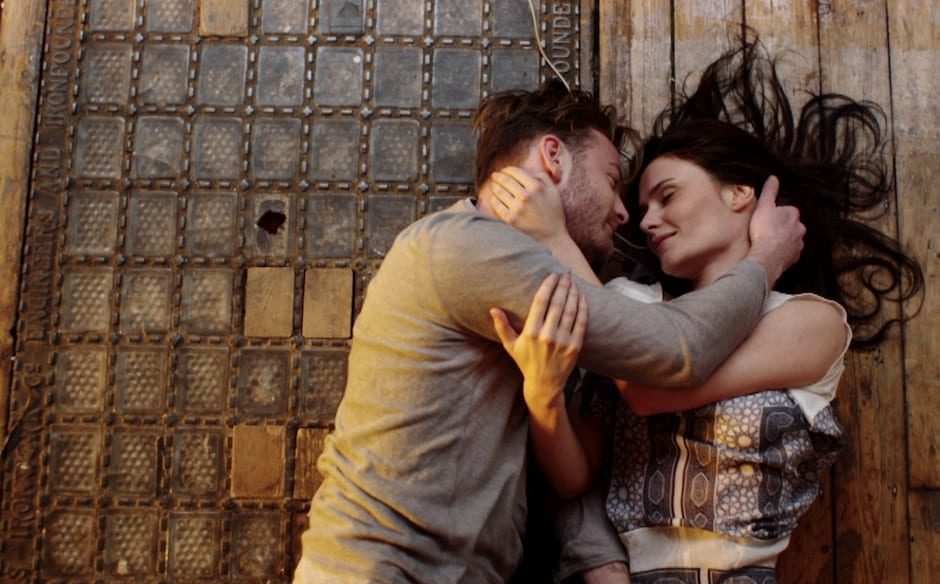The viewer is undoubtedly left to draw their own conclusions but what was the scenario going on in your mind when you wrote the script?
I’ve always found myself drawn to films that lead you to draw your own conclusions. I think the idea originated from me being in a place of frustration at the time. I had this idea about a person literally just having enough of what ever was happening to them and just escaping it all by running away from it and letting go of all of this rage and stress in the process. This then turns into a total release of feelings as they emotionally break down and then finally come to terms with whatever it is that has happened.
It’s based on the five stages of grief – Denial / Anger / Bargaining / Depression / Acceptance. Funnily enough I never had a single idea in my mind about what the scenario actually was that prompted it all. I could give you a thousand reasons but what I found interesting is that I think it’s how a lot of people feel at the moment. There is a lot of suppressed anger and frustration in the world right now.
What came first – your idea for this film or the brief from the singer? And to what extent did you collaborate with Kathryn Joseph on the film? She was obviously cool with the sound effects, such as the sirens softly in the background?
The idea definitely came first. I had the idea about 4-5 years ago but had no idea how to do it or what to do with it. I would constantly jump between having it as a one shot to shooting it all much more traditionally so that you could cut around moments. I ended up coming to the conclusion that it worked a lot simpler and effective as a single shot.
There was never a brief from the label. I had been talking to Kathryn for about a year about making a short film for her music after discovering her on Spotify. We met and discussed a number of ideas and originally I was intent on shooting something completely different for her than what we ended up with. I just hadn’t figured out how to do this at the time. Then by chance, while scouting for a commercial in LA I came across some streets that felt right for this idea that I had had in the back of my mind. I talked to Iconoclast about it and they made it happen! At the time I had no idea what it was even going to be for.
The next day during the long flight back to London I played the film on loop and tried all kind of different tracks over it. I finally played 1111 and it all came together, the changes in the track reflected the changes in the character, the timings, it all just fell into place. When I first played it to Kathryn I think she didn’t know what to really make of it as it was basically just given to her as an already shot product and not the one we had talked about. Luckily she fell in love with it and let me add the sound design afterwards.
She’s very collaborative like that which is awesome as I really wanted it to be as powerful as possible and by having the character’s grunts and screams and all the background noise you really do feel immersed in what you are seeing. It’s funny you mention the sirens. I had a lot of thoughts about where to place those in the film. If you put it at the end as he’s walking back to the house it leads you to believe something violent happened in there. I love how this film could be manipulated in many different ways with sound.
BTW we recorded NO sound on the shoot! Martin Leitner at Wave Studios did an amazing job of putting together an ADR session we recorded and making it work!
The simplicity also comes from the colour palette, the long tracking shots and the focus completely on the lead character without the distraction of anything else except the landscape and light. How did you arrive at these decisions?
It was always my intention to just focus on the character and his emotional journey. I did think about starting the film from behind him and then we rotate around him to reveal him but then you are 1 minute into the film and have no idea what is going on. His strongest moments of rage are immediately after he leaves the house so you have to be on his face from the very start.
We scouted the streets which are a couple of hours north of LA with the idea in mind that we don’t want to distract too much from what we are supposed to be looking at and also it felt like that character could live in that kind of neighbourhood. The direction of travel was determined by where the light was in the frame. Our DOP Paul Meyers did an amazing job and then Yoomin at Jogger Studios did a beautiful colour grade for us which really brings it all together.
Scottish singer. English director. Why did you decide to shoot in the States?
One of my original ideas for Kathryn was a film that would be shot all up in Scotland which in retrospect would have been more expected. However the more I thought about the contrast of two totally different worlds, the more I fell in love with the idea. The more I played the single take against her music on the plane home, the more it resonated with me.
LA was the perfect place for me to shoot as my initial idea was always set in this environment with a character, that you don’t immediately think would have an emotional breakdown. I like that what you first see is this stereotype of an alpha male, heavily tattooed, aggressive and angry and then it turns into something else when he breaks down and cries. It’s not something you see every day. I like to try and break stereotypes when I can.
How did you cast the lead character? And how did go about directing him?
Our casting director on the previously mentioned commercial was Jodi Sonnenberg of Sonnenberg Casting in LA, who is amazing. I reached out to her on the off chance to see if she knew of anyone that would fit the part of a heavily tattooed guy. She sent over a list of people which I shortlisted and then they came over to the production company car park and my producer and I basically had them run through the idea there and then.
It was pretty intense to have these huge guys screaming and running around in the middle of the day in the car park! I have some awesome iPhone footage of this actually! On the actual shoot I would prompt Mario with all kinds of nasty ideas about what could have happened to him in order to get the best performance out of him. I did make sure that I told him before hand that it’s not personal and not to punch me in my face afterwards! I said some pretty nasty things to him!
Any major challenges on the production?
On the actual shoot we had an electric golf cart type vehicle which the Steadicam operator – Ross Coscia – sat on until Mario slows down and begins punching the air, he would then jump off the cart and continue on foot. After I think the third take (we did 5 or 6 in total) the golf cart stopped working, the power had run out! We frantically knocked on a couple of doors asking for neighbours to let us use their pick up trucks. Thankfully a family let us use theirs and even let us drive it ourselves so we completed the shoot using their pick up truck.
It was pretty stressful at the time but all worked out in the end. In general it was a pretty hard project to put together as the commercial we were shooting was already pretty full on. It was a small miracle it actually happened so I have to give a huge thank you to my production company Iconoclast in LA – for allowing me to do something so experimental with no plan of what to do with it. Not many companies would let a director do that so big love to them for their trust and support!
















